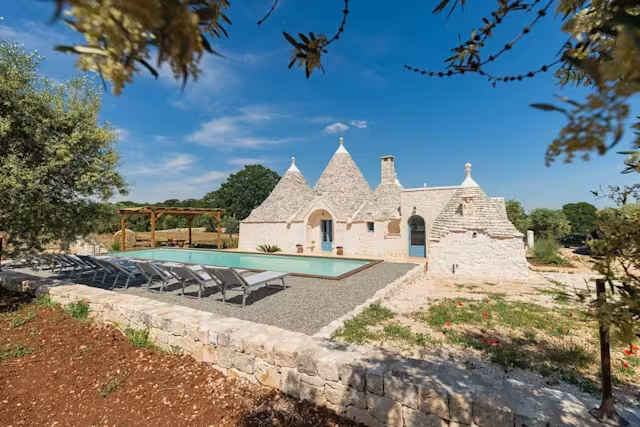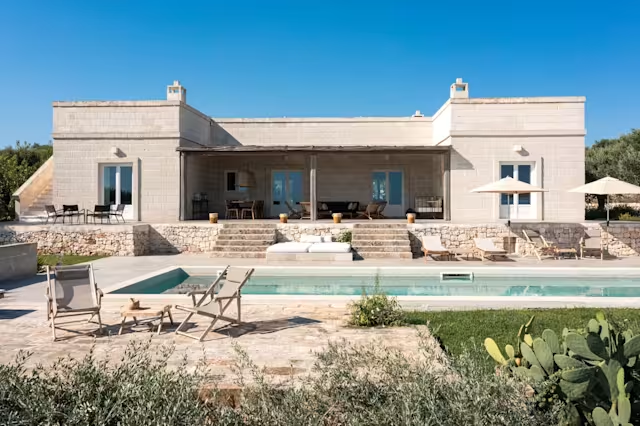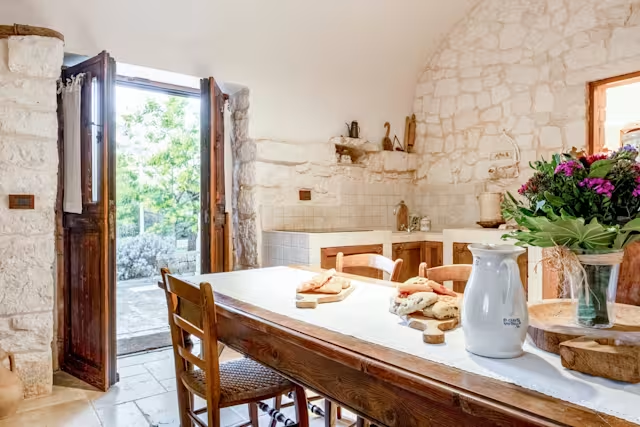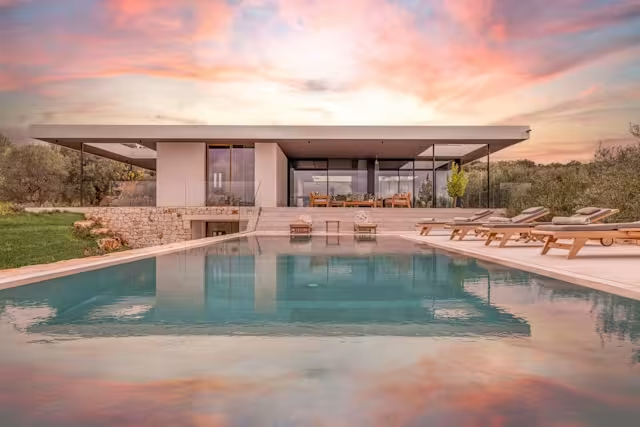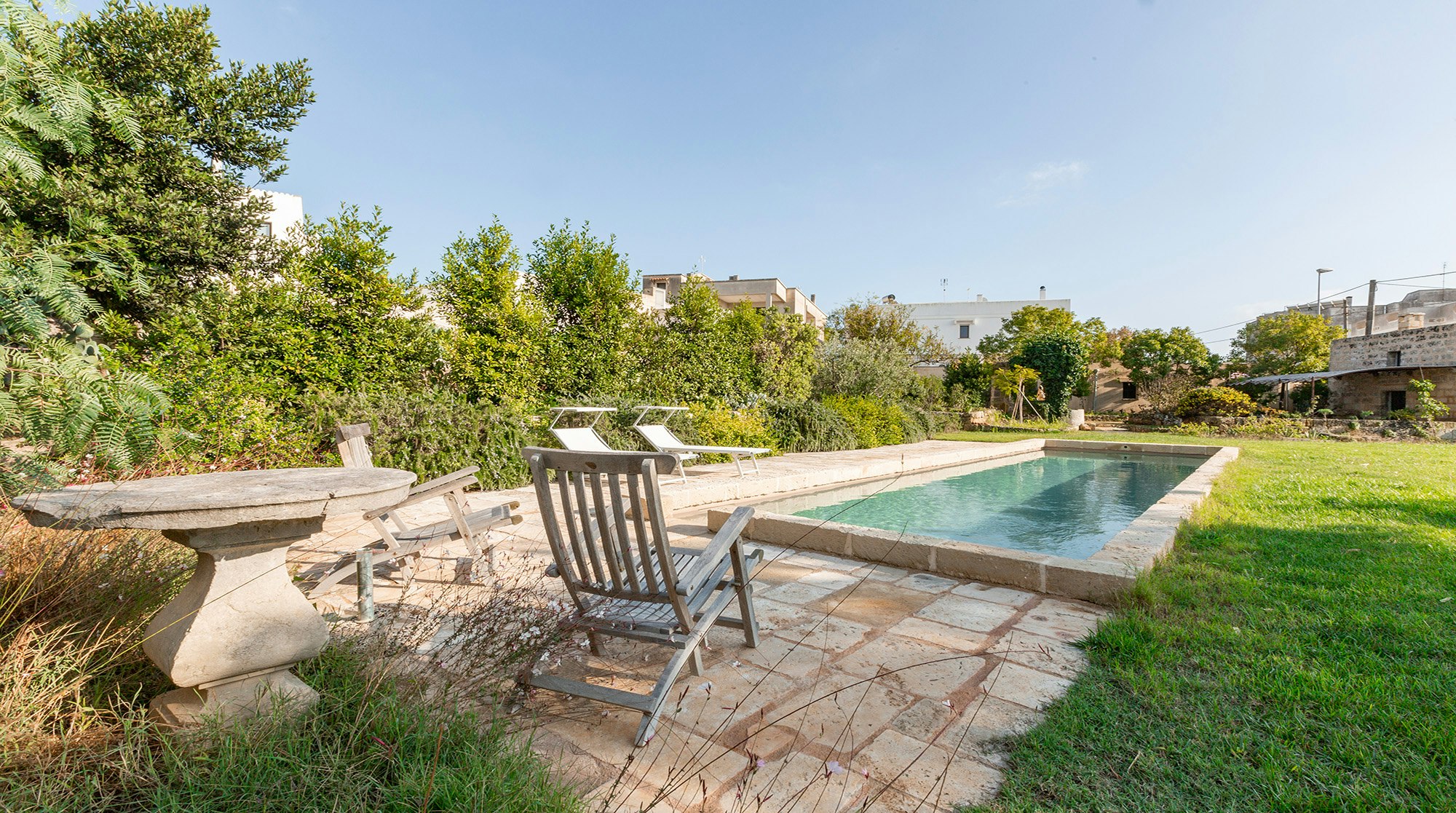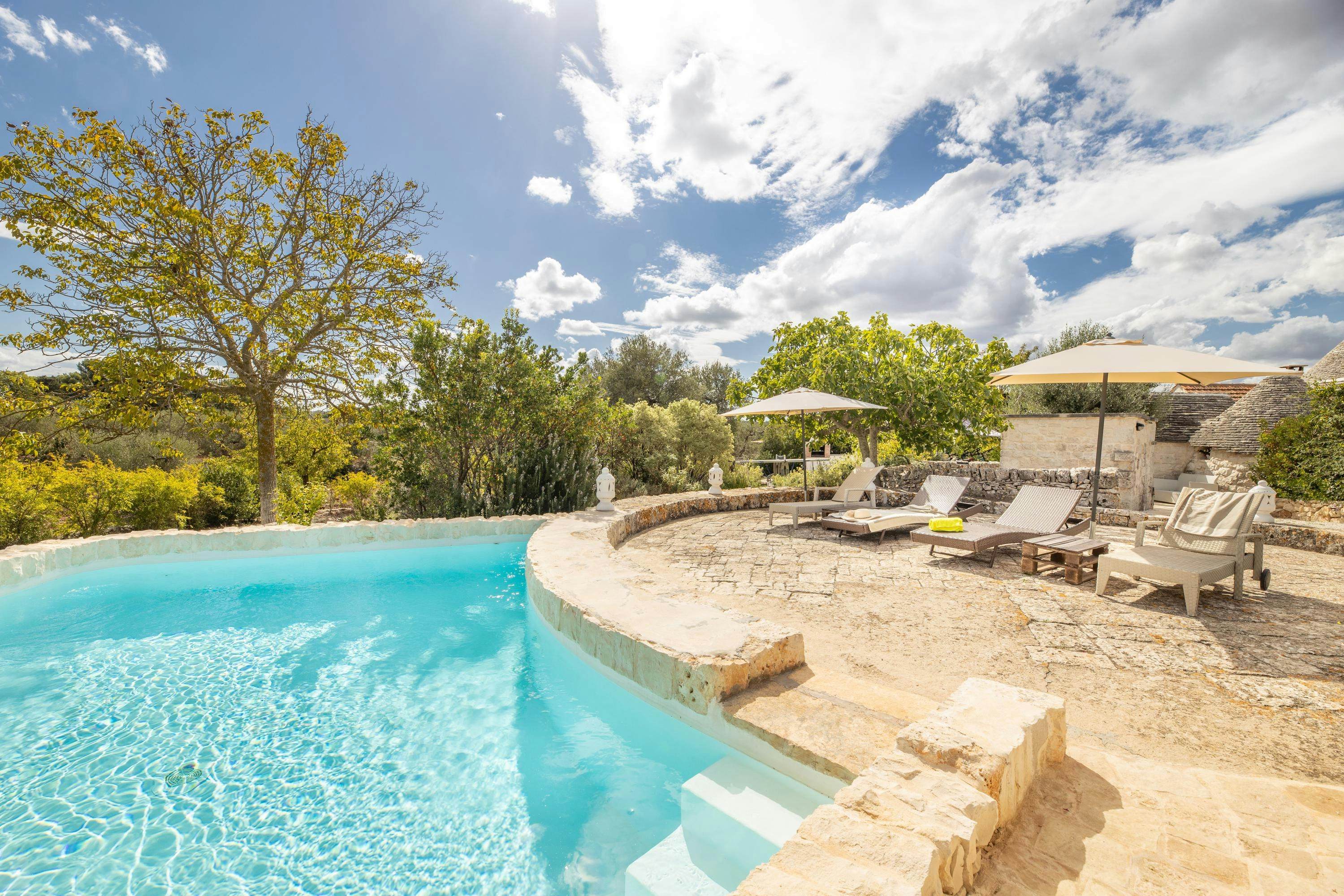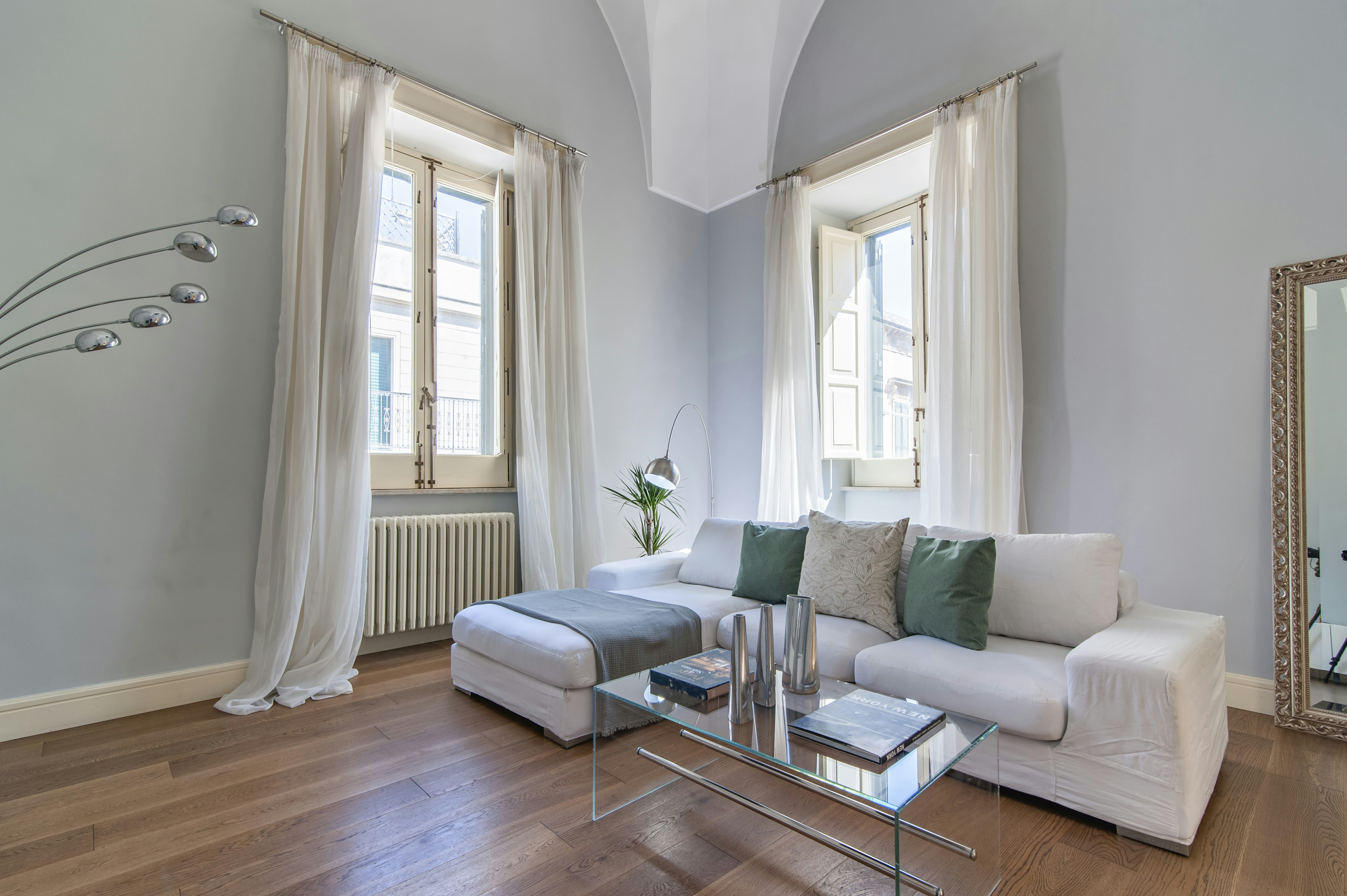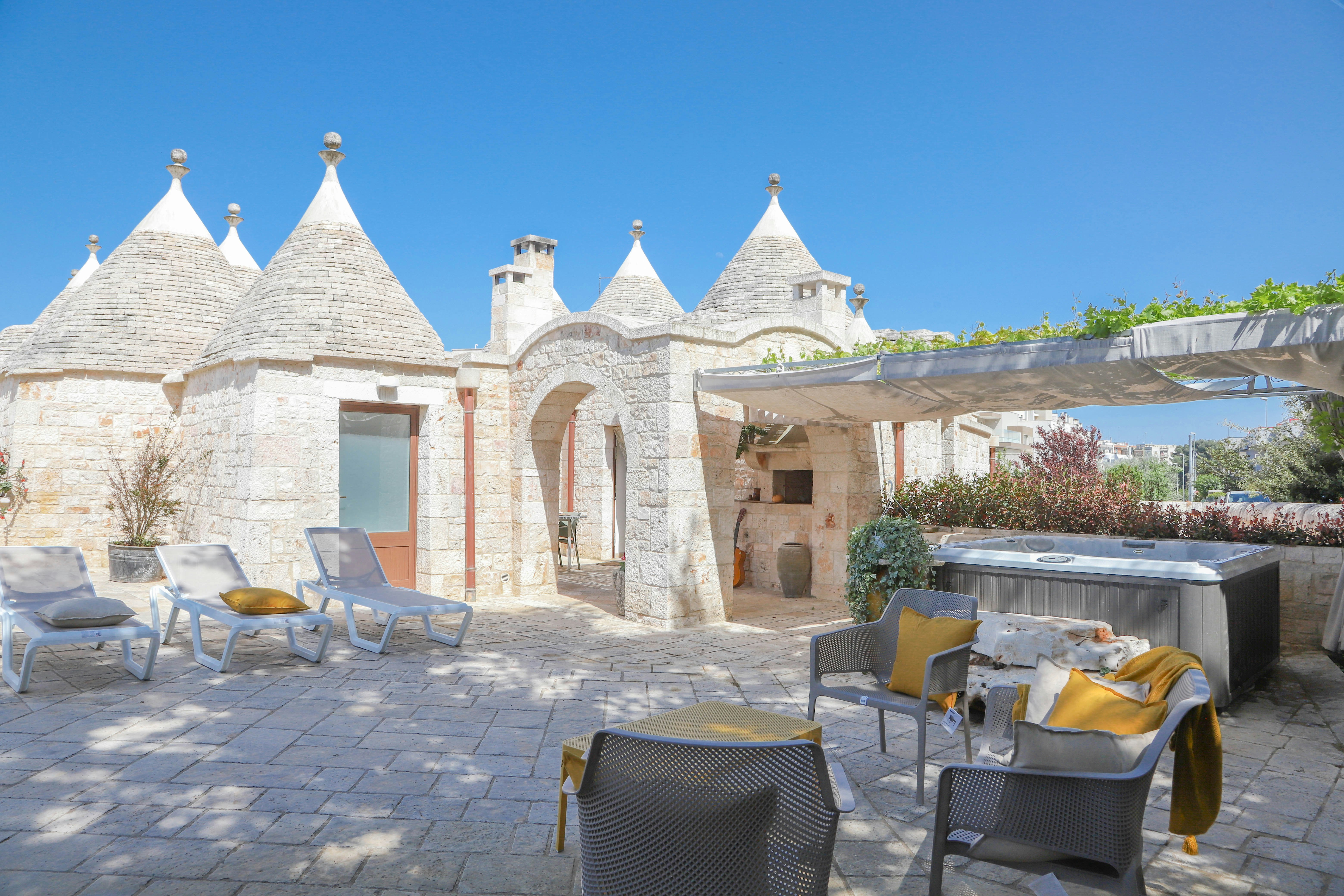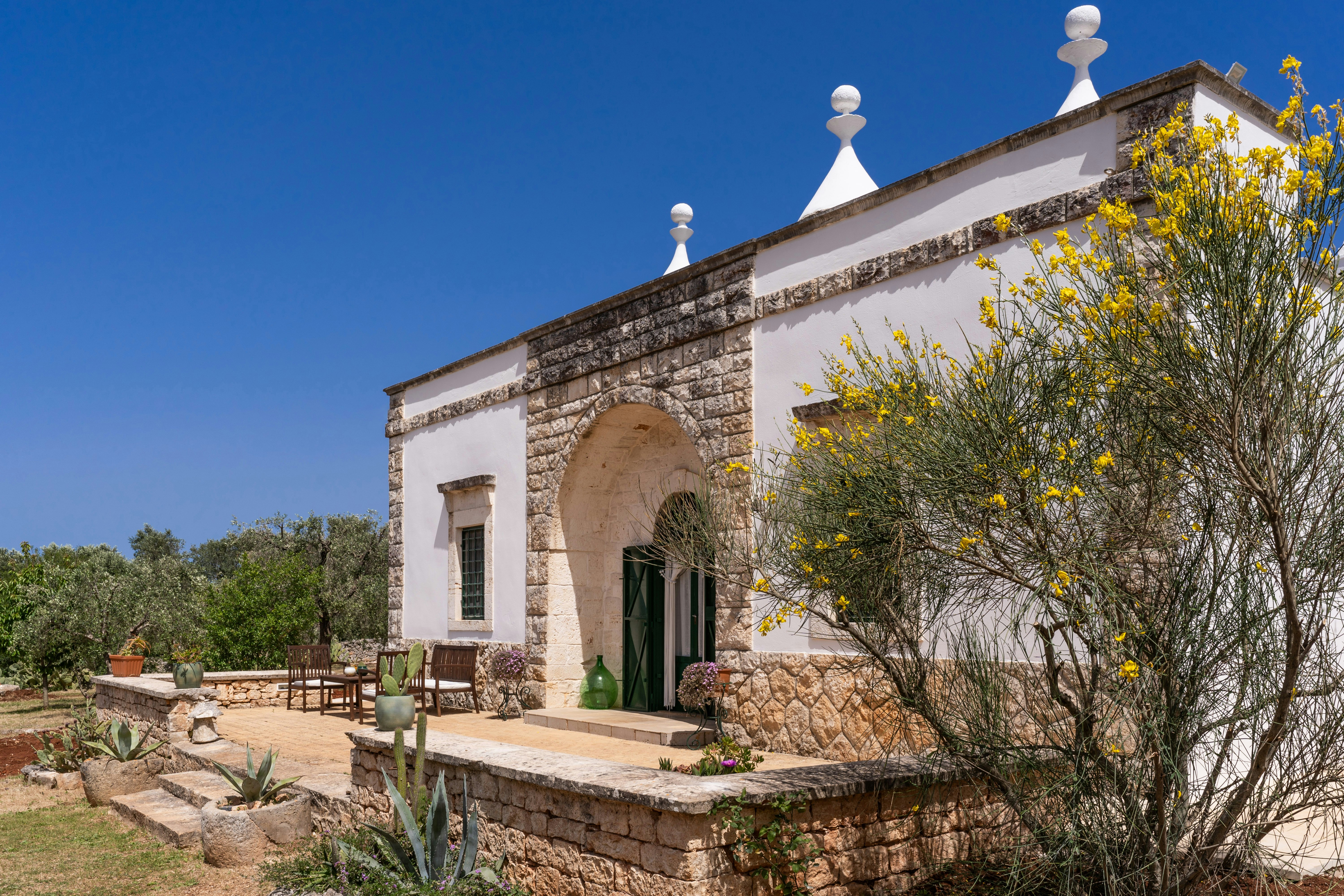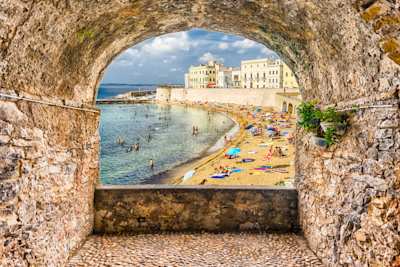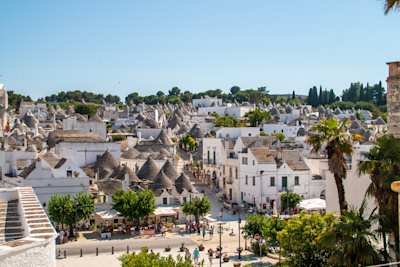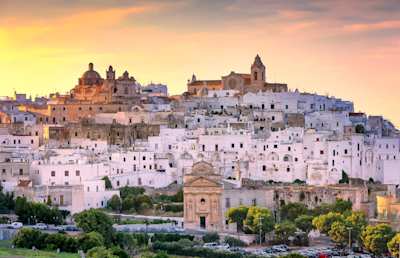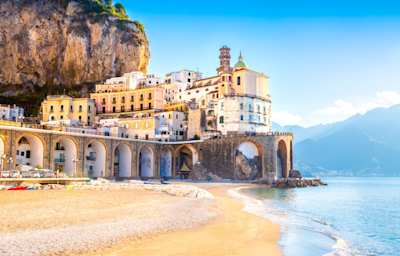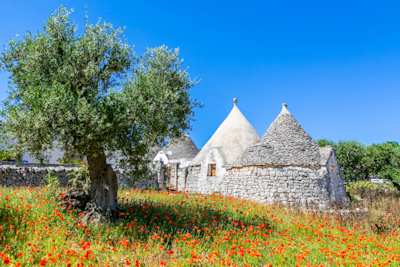7 Fantastic Reasons To Visit Puglia (Apulia)
From its timeless traditions and sun-kissed beaches, to exquisite food and drink, Puglia is an all-in-one destination
~

Tucked away in the ‘heel’ of Italy’s boot-shaped peninsula, Puglia (also known as Apulia in English) is a region bursting with charm. Life moves at a slower pace down here, where you can enjoy lazy beach days, island hopping and leisurely strolls through vineyards and ancient towns. Here at Plum Guide, we love any excuse to put our feet up and enjoy a glass of wine (who doesn’t?), which is why Puglia is one of our favourite destinations in Italy. If you’re considering a vacation here but need a little more convincing, take a look at our top reasons to visit Puglia. You’ll be booking those tickets in no time.
Ancient architecture

Ostuni's white-washed skyline against blue skies, Apulia/Puglia, Italy
Puglia has a rich and varied history, having been occupied by the Messapians, Greeks, Romans, Normans, Byzantines, French and Spanish. As a result, its buildings are a remarkable blend of styles that will excite any architecture lover. Many of the towns, including Gallipoli and Ostuni, are home to striking Baroque buildings where you can spot details like gargoyles, festoons and corbels on their facades. However, the best example is the town of Lecce, so much so that it’s been nicknamed the ‘Florence of the South’. Stroll around the pretty streets and admire the sights, such as the gold accents and rose windows of the Basilica di Santa Croce and the frescoes in the Church of Saints Nicolò and Cataldo.
Greek and Roman ruins are also prevalent in Puglia, and you can visit various archaeological sites to see them up close. Egnazia Archaeological Park is one of the most significant sites in the area, with artefacts ranging from the ancient Messapian city of Gnathia to the Middle Ages. Founded by the Spartans, the city of Taranto also has plenty of fascinating Greek history to discover.
The unique trulli
Puglia’s most distinctive architectural style is the trullo (plural: trulli). These circular dry stone huts are unique to Puglia and date back to the 14th century. Originally built as temporary shelters, they were constructed so they could be easily dismantled and rebuilt to avoid any property taxes. The conical roofs are made from dry-grouted stones arranged in a circular pattern and finished with decorative pinnacles. Trulli are often painted white to reflect sunlight and maintain a cool temperature inside, even on the hottest summer days.
While many trulli have been abandoned and fallen into disrepair over time, plenty have also been restored and preserved to their former glory. The best place to see them is Alberobello, a UNESCO World Heritage Site in the stunning Itria Valley. Prepared to be utterly charmed by the cobbled streets lined with trulli, many of which have been converted into shops and restaurants.
Amazing food
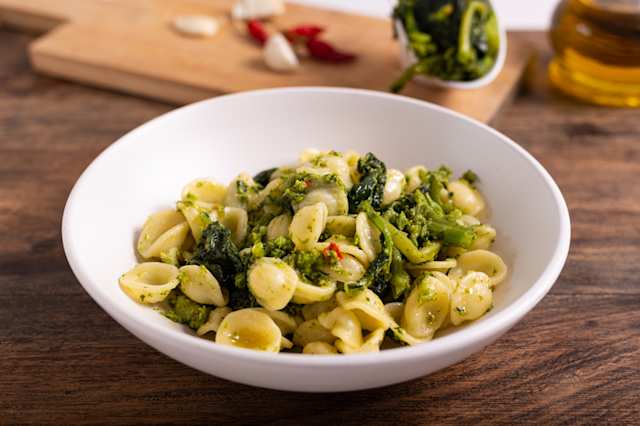
Orecchiette pasta with broccoli rabe, a typical southern Italy dish, Puglia, Italy
For foodies, one of the most exciting reasons to visit Puglia is its mouthwatering cuisine. It’s one of the largest producers of durum wheat in Italy, so expect to be dining on delicious bread and pasta while you’re here. Orecchiette (‘little ears’) is the most iconic Pugliese pasta. In Bari’s Old Town, you can watch local women making it by hand, and when you get hungry, pop into the trattorias to try the classic dish of orecchiette with broccoli rabe.
Other typical Pugliese dishes include panzerotti, which are tomato and mozzarella-stuffed pockets of dough. They’re most often deep-fried and served hot. What could be better after a carb-heavy meal than even more carbs? Desserts in Puglia are worth saving room for. We particularly love pettole (fried dough balls dusted with sugar) and pasticciotti (a tartlet filled with custard and sour cherry, mostly found in and around Lecce).
Like most of Italy, Puglia has a strong food culture. There are many ways you can enjoy the food beyond the restaurants, such as exploring the agricultural countryside and visiting working farms, many of which offer farm-to-fork dining.
Wineries and vineyards
The best way to wash down all that delightful food is with a glass of local wine. Puglia is one of the largest wine-producing regions in Italy, with varieties such as Primitivo, Negroamaro and Bianco Locorotondo. There’s a huge choice of wineries and vineyards to visit, spread across Puglia’s four main wine areas of Salento, Manduria, Gioia del Colle and Castel del Monte. Many of them also offer tasty food pairings like cheese, olives and cured meats to complement the wine.
Tormaresca is one of Puglia’s best-known wineries, located near the impressive 13th-century Castel del Monte. They have two estates (Masseria Maime and Bocca di Lupo), which grow local grape varieties like Aglianico, Nero di Troia and Fiano Pugliese, as well as renowned varieties like Cabernet Sauvignon and Chardonnay. Enjoy a tour of the grounds followed by a tasting. Another of our favourites is Antica Enotria, a family-run winery dating back to the 1700s. It’s certified organic and also produces olive oil, fresh vegetables and a range of sauces worth tasting.
The olive oil farms
Speaking of olive oil, another great reason to visit Puglia is its abundance of this precious gold liquid. It supplies 40% of Italy’s olive oil production, producing over 150,000 tons of oil annually. If you’re interested in learning how olive oil is made, we recommend visiting an olive farm, many of which have been around for centuries.
One of our favourites is Agricola Taurino, which offers the chance for visitors to walk through the olive groves and learn more about the olive varieties. Visit the oil mills to see first-hand the different stages of oil production and, if you’re visiting between October and November, partake in the olive harvest. As part of the tour, you’ll also get to taste a range of oils while a guide explains the different scents and health benefits. If you’re here on a special occasion, you can even arrange a picnic with tasting baskets packed with pates and grilled meats.
Gargano National Park
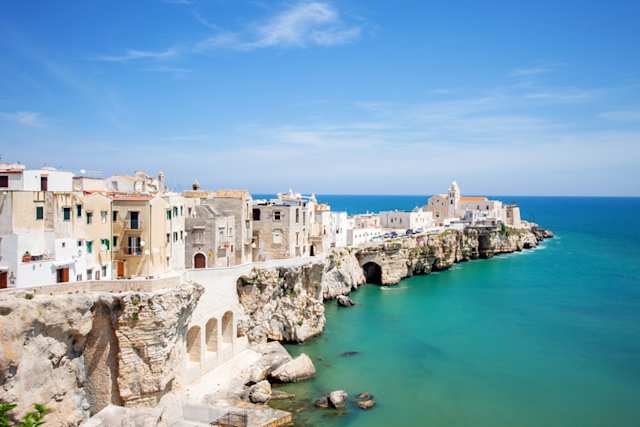
Whitewashed houses and coastal views in Vieste, part of Gargano National Park, Puglia, Italy
Outdoor lovers won’t want to miss a trip to Gargano National Park. Extending over 120,000 hectares on the Gargano Peninsula, this beautiful protected area is often overlooked by visitors who head straight to towns like Ostuni, Lecce and Alberobello. Those who do take the time to visit will be treated to a diverse range of landscapes, from dense oak and beech forests to dramatic limestone caves. We suggest starting in Vieste, a village right on the coast with fantastic beaches (our favourite is Scialara) and sweeping views.
The best way to take in the park's beauty is on foot. You’ll find a range of hikes, from laid-back strolls through the Umbra Forest to challenging hikes up Monte Calvo – it's the park’s highest peak at 1,056 metres. Gargano is known for its rich biodiversity, so keep an eye out for wildlife like foxes, deer, wildcats and numerous bird species.
When you’ve worked up an appetite, there are plenty of towns where you can make a detour and load up on traditional Pugliese dishes. We love Monte Sant’Angelo, a whitewashed village perched on the slopes of Monte Gargano. Here you can explore the maze of streets and admire the views from the castle.
Tremiti Islands
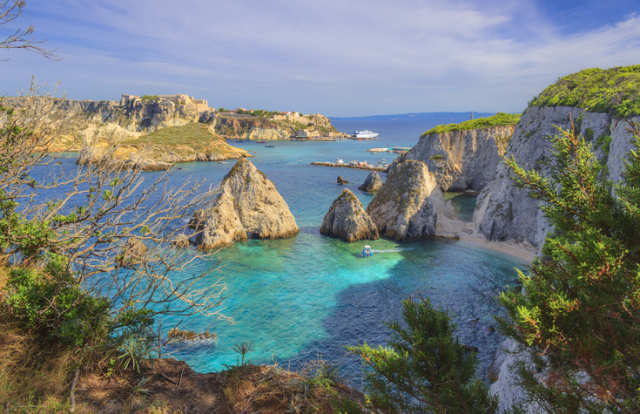
Seascape of Tremiti archipelago with Pagliai cliffs in San Domino island, Cretaccio and San Nicola island in background, Puglia, Italy
Although located within the Gargano National Park, we think the Tremiti Islands deserve their own section on our list of reasons to visit Puglia. If you have the time, we highly recommend adding this group of five islands in the Adriatic Sea to your itinerary.
San Domino is the largest and most visited island. Covered by a forest of Aleppo pines, you’ll find dozens of hidden coves tucked away between the cliffs. One of the best things to do here is to take a boat tour to visit the magical sea caves of Grotta delle Viole, Grotta delle Rondinelle and Grotta del Bue Marino. After a day of snorkelling and scuba diving in the turquoise waters, tuck into a meal of fresh seafood at one of the seaside restaurants.
San Nicola is the second-largest island, and a great choice for those interested in culture and history. Named after the monk Nicolo who is buried here, the island is home to the remarkable Abbey of Santa Maria a Mare. It was built in the 9th century by Benedictine monks. As well as the abbey, be sure to visit the Castle of Badiali for its dazzling views of the coastline.
There are also the uninhabited islands of Capraia, Cretaccio and Pianosa. Capraia is the best one to visit, where you can hike through its wild and rugged interior. It’s also a favourite stop for scuba diving, as you can swim down to a 3rd-century Roman shipwreck.
Even if you don’t make it to the Tremiti Islands, there are a plethora of stunning beaches along the mainland’s 800-kilometre coastline. Some of Puglia’s most well-known beaches include Baia dei Turchi, Lama Monachile and Vignanotica.
